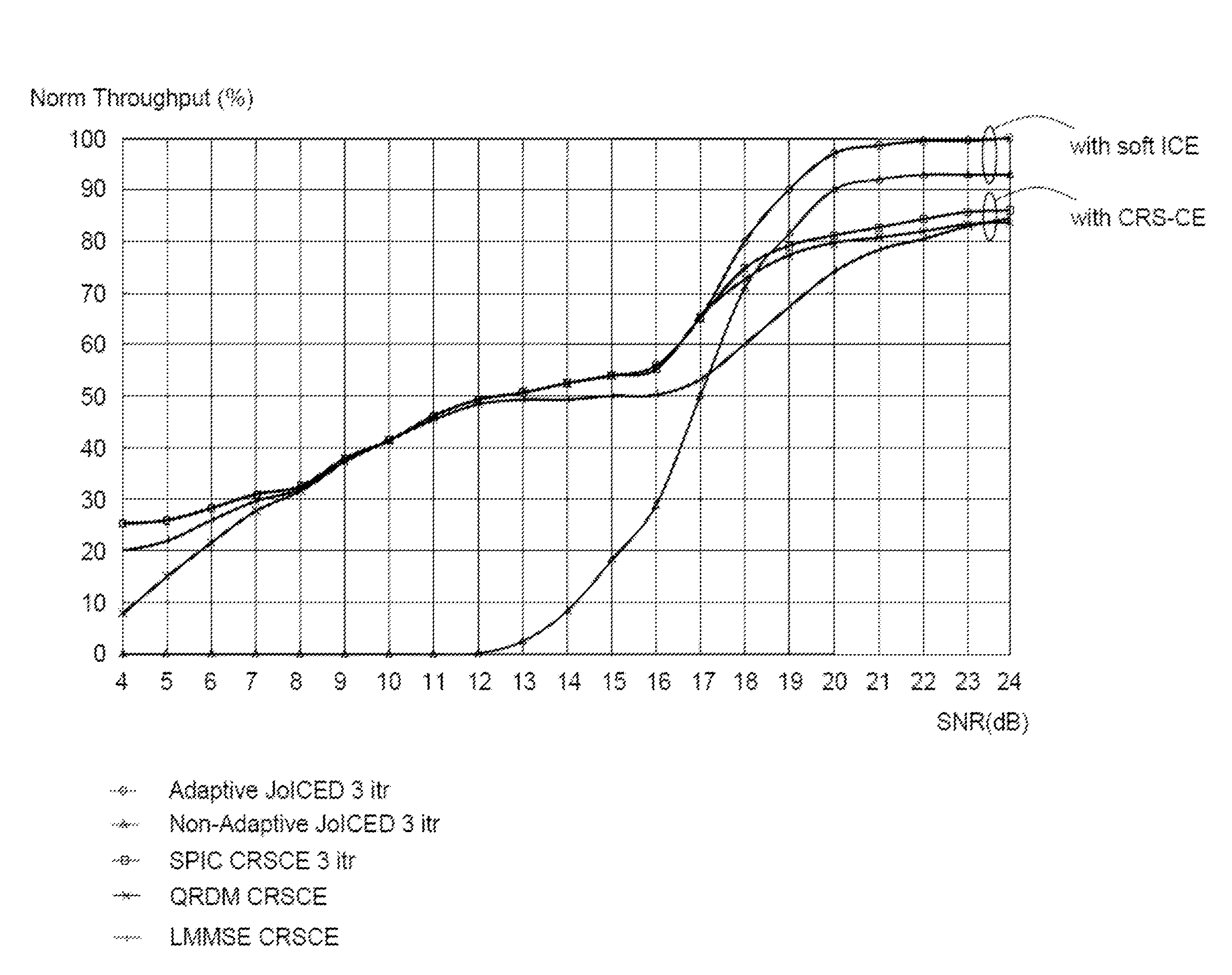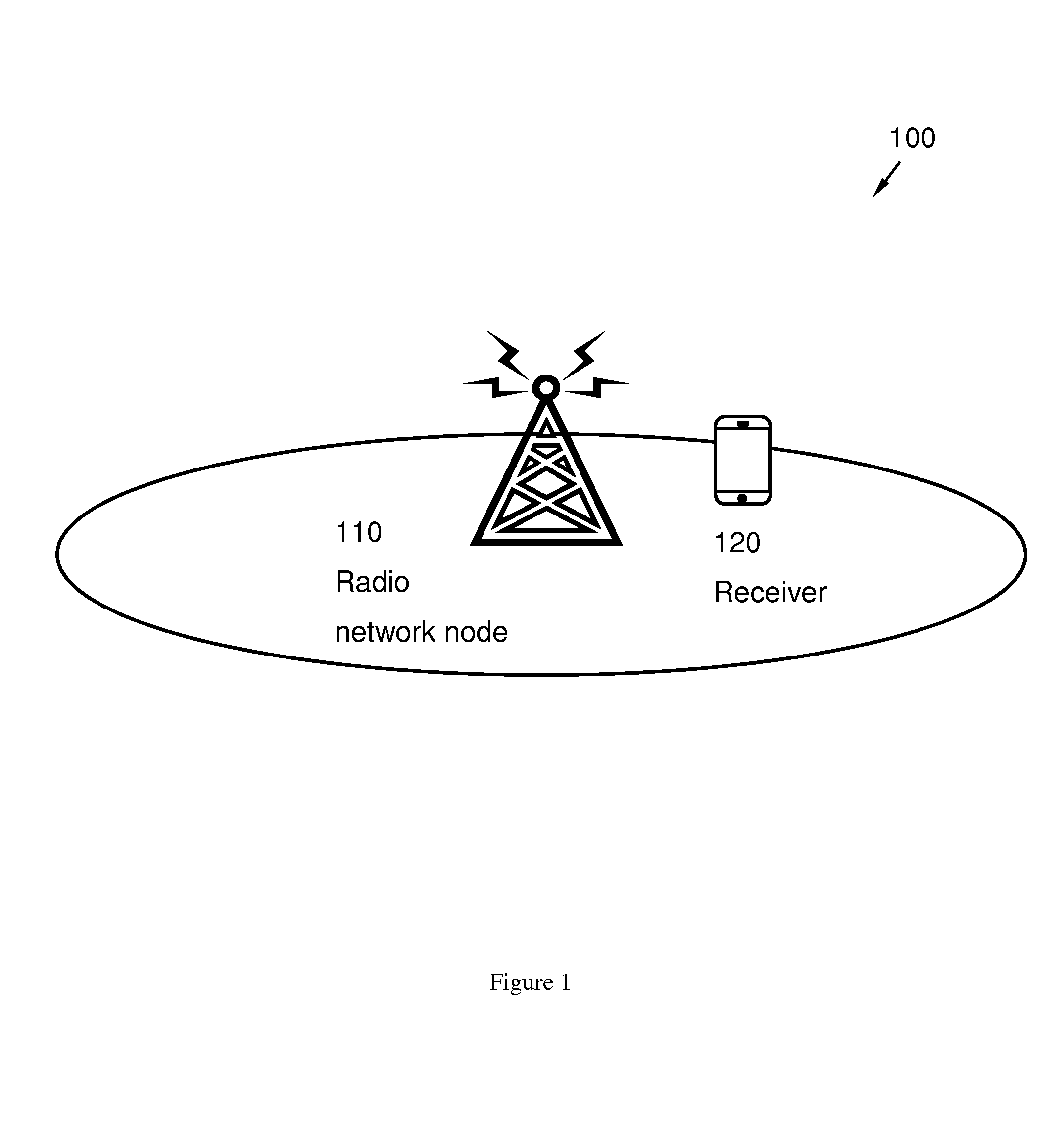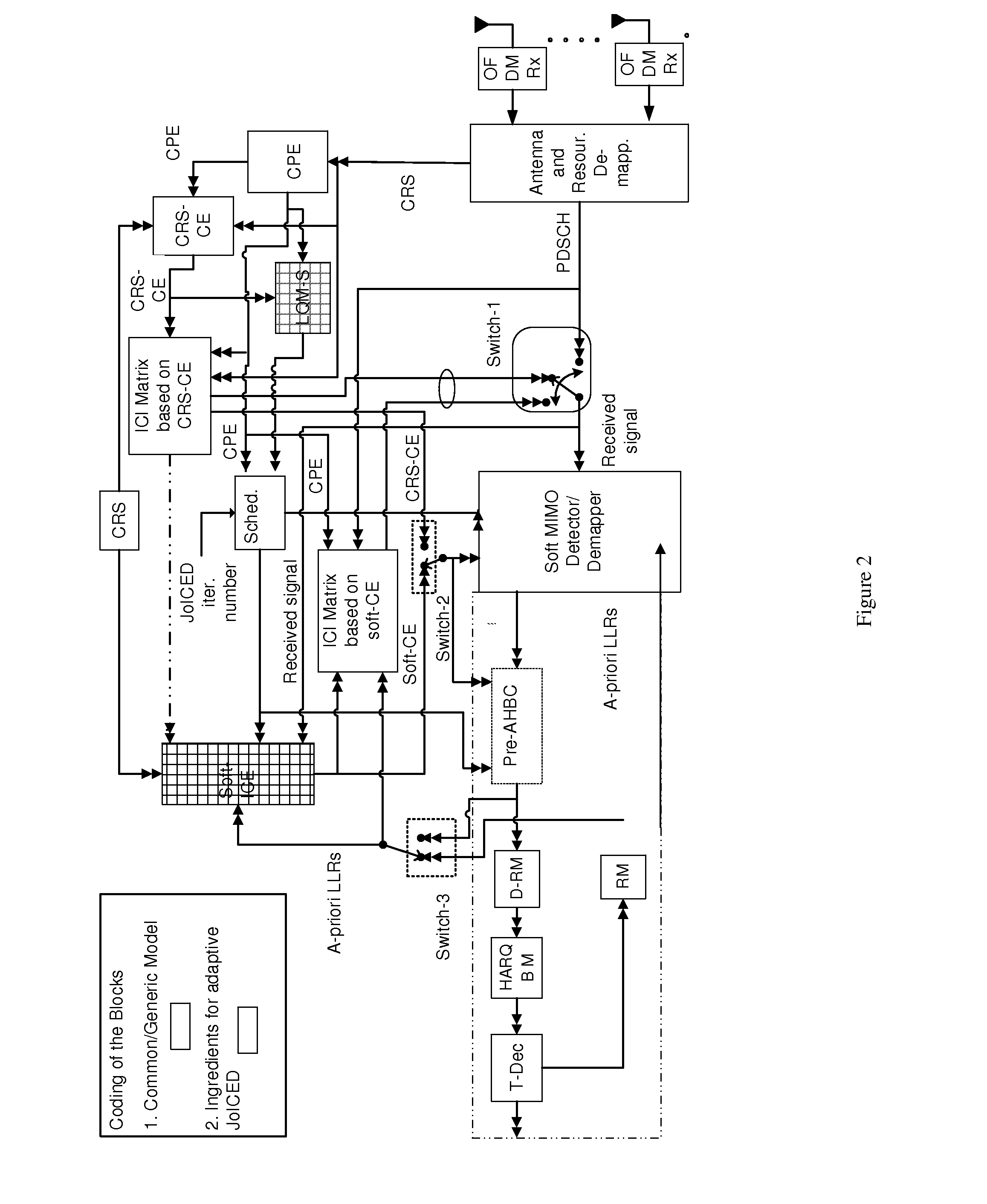Methods and Nodes in a Wireless Communication Network
a wireless communication network and receiver technology, applied in wireless communication, wireless commuication services, baseband system details, etc., can solve the problems of high data rate scenario error floors, very complex jced, and high implementation complexity, so as to improve the performance of wireless communication networks
- Summary
- Abstract
- Description
- Claims
- Application Information
AI Technical Summary
Benefits of technology
Problems solved by technology
Method used
Image
Examples
first embodiment
[0067] the time-domain channel coefficients' temporal variations may be approximated via a linear interpolation, or Taylor series, by employing hybrid frequency / time-domain channel estimation. Furthermore, higher order interpolations may also be performed via so-called Polynomial Basis Expansion Method (P-BEM). Linear Interpolation may be viewed as a special case of P-BEM with first order.
second embodiment
[0068]Further, a canonical structure of the so-called full channel frequency response matrix i.e., comprising not only diagonal elements but also the off-diagonal elements within an OFDM symbol, may be used, which is quite elegantly represented in terms of the eigen vectors of the temporal correlation (i.e., intra OFDM symbol correlation).
[0069]FIG. 3 depicts a detailed structure of a soft-ICE which utilises a posteriori LLRs output from either TDEC or soft MIMO detector depending on the utilised LQM-H, in particular MI based.
[0070]The basic principle of soft-ICE comprises to re-estimate the channel in case one of the codewords is failing or both codewords are failing. In order to re-estimate the channel, softdata (or partially known data) may be utilised as virtual pilots. Furthermore, as mentioned previously, the quality of soft channel estimates is quite dependent on (or directly proportional to) the quality of the soft-data or a posteriori (APP) LLRs. In other words, when the q...
PUM
 Login to View More
Login to View More Abstract
Description
Claims
Application Information
 Login to View More
Login to View More - R&D
- Intellectual Property
- Life Sciences
- Materials
- Tech Scout
- Unparalleled Data Quality
- Higher Quality Content
- 60% Fewer Hallucinations
Browse by: Latest US Patents, China's latest patents, Technical Efficacy Thesaurus, Application Domain, Technology Topic, Popular Technical Reports.
© 2025 PatSnap. All rights reserved.Legal|Privacy policy|Modern Slavery Act Transparency Statement|Sitemap|About US| Contact US: help@patsnap.com



